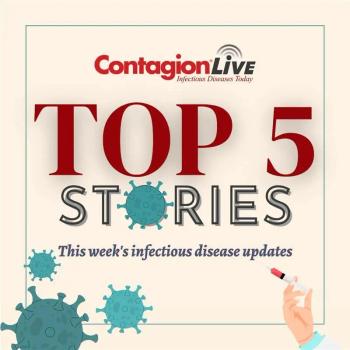
Vir Completes Enrollment In ECLIPSE 1 Phase 3 Trial For Chronic Hepatitis Delta
Primary completion is expected in Q4 2026 with topline results in Q1 2027, while ECLIPSE 2 and 3 continue enrolling to support potential US and EU submissions.
Vir Biotechnology has completed enrollment in ECLIPSE 1, a phase 3 trial evaluating the combination of tobevibart and elebsiran in adults with chronic hepatitis delta (CHD). The company expects the last participant to reach the primary endpoint in Q4 of 2026 and to report topline data in Q1 of 2027. Vir stated that ECLIPSE 2 and ECLIPSE 3 remain on track and are enrolling in line with expectations. The ECLIPSE program is intended to generate efficacy and safety data to support potential submissions to global regulators, including in the US and Europe.1
CHD is considered the most severe form of chronic viral hepatitis; the International Agency for Research on Cancer recently classified hepatitis D virus as carcinogenic. People with CHD can progress rapidly to cirrhosis, liver failure, and liver-related death. There are no approved CHD treatments in the US, and options remain limited in the European Union and globally. The therapeutic objective is elimination of the virus, and Vir’s combination aims to interfere with the viral life cycle through complementary mechanisms. The company reported that the program has received FDA Breakthrough Therapy and Fast Track designations and EMA PRIME and orphan designations.1
To understand the trial design and scientific rationale, Contagion spoke with Mark Eisner, MD, MPH, executive vice president and chief medical officer at Vir Biotechnology. Eisner discusses how the ECLIPSE program is structured to generate registrational evidence in regions with limited bulevirtide access, the complementary mechanisms of tobevibart and elebsiran, and the endpoints selected to assess HDV RNA target not detected and ALT normalization at Week 48.
Contagion: What are the primary endpoints for ECLIPSE 1, timing, definitions (virologic/biochemical/composite), and planned off-treatment follow-up to assess durability of response?
Eisner: ECLIPSE 1 is a Phase 3 trial focusing on patients with chronic hepatitis delta in regions where bulevirtide is not available or use is limited, including the United States. Participants are randomized to receive either tobevibart in combination with elebsiran or deferred treatment. During the deferred treatment period, participants receive only nucleoside reverse transcriptase inhibitors (NRTIs). After the initial delay period, participants are switched to the combination therapy of tobevibart and elebsiran.
The primary endpoints are:
- Composite endpoint consisting of hepatitis delta virus (HDV) RNA target not detected (TND) (defined as undetectable HDV RNA) and ALT normalization at Week 48, compared to the deferred treatment group at the end of their deferred treatment period.
- Incidence of TEAEs and SAEs through Week 12
Key secondary endpoints include HDV RNA TND, ALT, and hepatitis B surface antigen (HBsAg).
Contagion: How does combining tobevibart (anti-HBsAg bNAb) with elebsiran (HBV-targeting siRNA) address HDV pathobiology in a way that could improve on monotherapy or sequential approaches (eg, effects on HBsAg levels, HDV RNA suppression, ALT normalization, and the prospect of functional cure)?
Eisner: Tobevibart is an investigational broadly neutralizing monoclonal antibody targeting the HBsAg. It is designed to inhibit the entry of hepatitis B and hepatitis delta viruses into hepatocytes and to reduce the level of circulating viral and subviral particles in the blood.
Elebsiran is an investigational hepatitis B virus-targeting small interfering ribonucleic acid (siRNA). It is designed to degrade hepatitis B virus RNA transcripts and limit the production of hepatitis B surface antigen. Current data indicate that it has the potential to have direct antiviral activity against hepatitis B virus and hepatitis delta virus.
The combination of tobevibart and elebsiran targets HDV through complementary mechanisms of action—entry inhibition and RNA silencing.
Data from our clinical trials shows that the combination of tobevibart and elebsiran has exceptional ability to suppress HDV and achieve HDV RNA target not detected, which is associated with better outcomes for patients in terms of progression of the underlying liver disease. Also meaningful is the fact that we can significantly reduce hepatitis B surface antigen levels. The surface antigen is critically important for the viral life cycle of HDV, as the virus needs the surface antigen to replicate.
Contagion: How do ECLIPSE 1–3 collectively support anticipated FDA/EMA submissions (including the role of the deferred-treatment arm vs bulevirtide-based comparators), and what subgroup analyses are planned to inform access and real-world adoption?
Eisner: Our goal is to advance our HDV combination therapy toward registration in both the US and EU as efficiently as possible. ECLIPSE 1 and ECLIPSE 2 are both expected to serve as the backbone of our regulatory submissions in the US and Europe. ECLIPSE 3 is designed to provide head-to-head comparison data with bulevirtide, which will be particularly important in regions where this treatment is available.
We expect to be able to treat a broad population of patients, and we are working to generate data that continues to demonstrate that we are able to treat patients effectively independently of their viral loads and cirrhotic status.
Contagion: How do ECLIPSE 1–3 collectively support anticipated FDA/EMA submissions, including the role of the deferred-treatment arm vs bulevirtide-based comparators, and what subgroup analyses (eg, cirrhosis status, baseline HBsAg/HDV RNA, prior bulevirtide exposure, regional enrollment) are planned to inform access and real-world adoption?
Eisner: Our goal is to advance our HDV combination therapy toward registration in both the US and EU as efficiently as possible. ECLIPSE 1 and ECLIPSE 2 are both expected to serve as the backbone of our regulatory submissions in the US and Europe. ECLIPSE 3 is designed to provide head-to-head comparison data with bulevirtide, which will be particularly important in regions where this treatment is available.
We expect to be able to treat a broad population of patients, and we are working to generate data that continues to demonstrate that we are able to treat patients effectively independently of their viral loads and cirrhotic status.
Prior Evidence
Preclinical studies of the same combination support the trial’s dual-mechanism rationale. In HBV/HDV coinfection models, tobevibart (anti-HBsAg bNAb) showed pan-genotypic neutralization (EC50 1.1–4.6 ng/mL), while elebsiran (HBV-targeting siRNA) reduced secreted HBsAg and infectious HDV with picomolar potency; together they produced additive antiviral activity in primary human hepatocytes and, in liver-chimeric mice, decreased HDV RNA by ~2.1 log and HBsAg by ~2.8 log vs vehicle. These preclinical data motivate the ECLIPSE program’s composite endpoints (HDV RNA target-not-detected and ALT normalization), while recognizing that clinical efficacy and durability remain to be established.2
ECLIPSE 1 full enrollment marks a key step for Vir’s dual-mechanism CHD strategy. Primary completion is expected in Q4 2026 and topline data in Q1 2027. Along with ECLIPSE 2 and the head-to-head ECLIPSE 3, the program is positioned to generate registrational and supportive evidence for potential US and EU submissions and, if successful, broaden treatment options for a population with severe disease and limited therapies.
References
1.Vir Biotechnology. Vir Biotechnology Announces Completion of Enrollment in ECLIPSE 1 Phase 3 Trial for Chronic Hepatitis Delta. November 3, 2025. Accessed November 10, 2025. https://investors.vir.bio/news/news-details/2025/Vir-Biotechnology-Announces-Completion-of-Enrollment-in-ECLIPSE-1-Phase-3-Trial-for-Chronic-Hepatitis-Delta/default.aspx
2.Zhou J, Kaiser H, Rocha E, et al. Therapy with murinized tobevibart and elebsiran is efficacious in a liver-chimeric mouse model of HDV infection. JHEP Rep. 2025;7(6):101400. doi:10.1016/j.jhepr.2025.101400
Newsletter
Stay ahead of emerging infectious disease threats with expert insights and breaking research. Subscribe now to get updates delivered straight to your inbox.


























































































































































































































































































